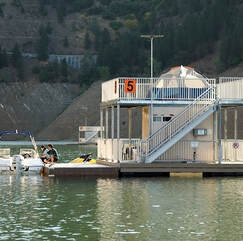 July 22, 2022 Water Safety The hot weather is pushing more people to visit and explore our local waterways, lakes, and reservoirs, including the Feather River and Lake Oroville. Boaters are reminded to place safety as their top priority by making sure they and their passengers are wearing life jackets. U.S. Coast Guard statistics show that 80 percent of all drowning victims were not wearing a life jacket. Abiding by posted speed limits and signage, particularly regarding locations where swimming is prohibited such as in marinas or near boat docks or launch ramps, as well as paying attention to warning buoys, especially in reservoirs or other waterbodies with fluctuating water elevations, can greatly increase the safety of those with and around you. Lake Oroville has a lake-wide 5-mph speed limit at nighttime and personal watercraft or jet skis are prohibited from nighttime operation, even if they have navigation lights. Hours of operation at Thermalito Afterbay are 1.5 hours before sunrise to one hour after sunset. Boaters there are reminded of that waterbody’s 5-mph limit north of the Highway 162 bridge and, for all waterbodies, within 200 yards of shore. Water enthusiasts are also reminded that, even on a hot day, the water temperature can be cold and trigger cold water immersion shock. Cold water reduces body heat 25 to 30 times faster than air does at the same temperature and can quickly turn a good time into a life-threatening situation. Knowing the symptoms of hypothermia (when your body loses heat faster than it be produced) such as uncontrollable shivering, blue lips, clumsiness or lack of coordination, or bright red, cold skin, particularly among children who may be unaware of, or desire to ignore, their symptoms, can prevent a tragedy from occurring. If you suspect you or someone else is having these symptoms, act quickly to get out of the water, seek help, and begin gradual warming of the body. Taking sensible and even extra precautions when recreating around or in the water will help keep you and your family safe this summer. For more information on boating requirements and safety, visit the California Division of Boating and Waterways and cold-water safety tips at the National Weather Service’s Safety webpage. Oroville Dam Citizens Advisory Commission Meeting The California Natural Resources Agency is hosting its 11th Oroville Dam Citizens Advisory Commission meeting on July 29, 10 a.m. to Noon. The public meeting will be held at the Southside Community Center in Oroville, located at 2959 Lower Wyandotte Road, Oroville, CA 95966, and will include presentations and public comment. The Commission will receive a brief update on the development of the Commission report, a recap of a flood safety stakeholder technical workshop held in April, and a presentation from the California Department of Water Resources (DWR) on dam facilities management and annual maintenance planning. Time for public input is also scheduled. The Oroville Dam Citizens Advisory Commission is a forum for questions and feedback from the communities surrounding Oroville Dam. For information on the meeting, please visit https://bit.ly/OrovilleCAC. 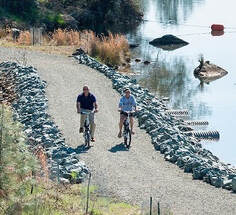 OROVILLE RECREATION Four paved boat ramps at Lime Saddle, Bidwell Canyon, Spillway, and Loafer Point are open at Lake Oroville, along with the Lime Saddle and Bidwell Canyon marinas, and reservations for campgrounds in the Lake Oroville State Recreation Area (LOSRA) can be made by visiting the California Department of Parks and Recreation (CA Parks) LOSRA website. Restrooms, potable water, and fish cleaning stations are not in service at the Spillway Boat Ramp area, but portable toilets are provided – please plan visits accordingly. A water and sewer pipeline replacement project is underway to restore these utilities. Please be aware of construction traffic in the vicinity of the Spillway Day Use Area. The Thermalito Forebay and Afterbay provide a wide range of recreation opportunities including fishing, hiking, biking and boating. Non-motorized boating is permitted in the North Forebay, and motorized boating is only permitted in the South Forebay and Afterbay. Boaters are reminded to abide by speed limits near boat launch areas and north of the Highway 162 bridge where Afterbay speed limits are five (5) miles per hour. Visitors are reminded to abide by all posted signage regarding permitted swimming areas (never near boating docks) to ensure public safety for all. Swimming near boat docks is dangerous – risks include propeller strikes and boat collisions, carbon monoxide poisoning from boat exhaust, electrical shock from shorted wiring in boats or docks, and an increased chance of polluted waters where boats are launched and retrieved. The North Forebay Aquatic Center has kayaks, paddle boards, and other watercraft available for rent Thursday through Sunday. Non-motorized boating is also permitted in the Thermalito Diversion Pool with kayak access just before the restroom on Cherokee Road. Lake Oroville and the Oroville Wildlife Area also have car-top boat launch areas. Visit the interactive map of recreation facilities in DWR’s Oroville-Thermalito Complex on DWR’s Lake Oroville Recreation webpage. And step inside the Lake Oroville Visitor Center, open Tuesday through Thursday from 9 a.m. to 5 p.m., to learn about the State Water Project and history of the area. 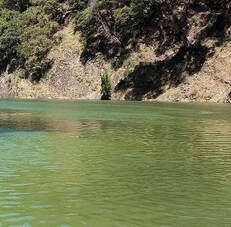 BLUE GREEN ALGAE MONITORING DWR environmental scientists regularly monitor for blue-green algae and their toxins during the summer months. There are currently no harmful algal bloom (HAB) advisories for Lake Oroville, the Thermalito Forebay, or the Thermalito Afterbay. Water samples are taken at various locations regularly from Memorial Day through Labor Day. To learn more about HABs, or to report a HAB visit the Water Board’s website. CURRENT LAKE OPERATIONS The elevation of Oroville’s reservoir is about 733 feet elevation and storage is about 1.53 million acre-feet (MAF), which is 43 percent of its total capacity and 62 percent of historical average. Very warm temperatures are anticipated over the weekend and into next week. Expect to see temperatures over 100 degrees throughout the week. The Feather River releases, currently at 4,000 cubic feet per second (cfs), are scheduled to decrease to 3,750 cfs on Friday, July 22, to meet downstream Delta water quality and outflow needs. Flows through the City of Oroville will be reduced to 1,300 cfs with 2,450 cfs released from the Thermalito Afterbay Outlet (Outlet) for a total of 3,750 cfs downstream of the Outlet. Flows through the low flow channel may fluctuate through the week for fisheries purposes. The public can track precipitation, snow, reservoir levels, and more at the California Data Exchange Center at www.cdec.water.ca.gov. The Lake Oroville gage station is identified as “ORO”. All data as of midnight 7/21/2022 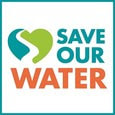 California is entering its third year of drought conditions. With water conservation now a way of life in California, everyone is encouraged to find ways to save water. See tips, tools, and ideas on the Save Our Water website. Information about real time local hydrological conditions, forecasts, and water conditions is available on DWR’s new website California Water Watch. July 15, 2022 Oroville Dam Citizens Advisory Commission Meeting The California Natural Resources Agency is hosting its 11th Oroville Dam Citizens Advisory Commission meeting on July 29, 10 a.m. to Noon. The public meeting will be held at the Southside Community Center in Oroville, located at 2959 Lower Wyandotte Road, Oroville, CA 95966, and will include presentations and public comment. The Commission will receive a brief update on the development of the Commission report, a recap of a flood safety stakeholder technical workshop held in April, and a presentation from the California Department of Water Resources (DWR) on dam facilities management and annual maintenance planning. Time for public input is also scheduled. The Oroville Dam Citizens Advisory Commission is a forum for questions and feedback from the communities surrounding Oroville Dam. For information on the meeting, please visit https://bit.ly/OrovilleCAC. 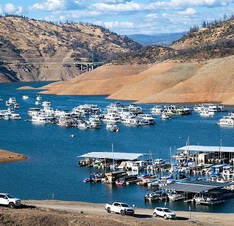 OROVILLE RECREATION Four paved boat ramps at Lime Saddle, Bidwell Canyon, Spillway, and Loafer Point are open at Lake Oroville, along with the Lime Saddle and Bidwell Canyon marinas, and reservations for campgrounds in the Lake Oroville State Recreation Area (LOSRA) can be made by visiting the California Department of Parks and Recreation (CA Parks) LOSRA website. Restrooms, potable water, and fish cleaning stations are not in service at the Spillway Boat Ramp area, but portable toilets are provided – please plan visits accordingly. A water and sewer pipeline replacement project is underway to restore these utilities. Please be aware of construction traffic in the vicinity of the Spillway Day Use Area. The Thermalito Forebay and Afterbay provide a wide range of recreation opportunities including fishing, hiking, biking and boating. Non-motorized boating is permitted in the North Forebay, and motorized boating is only permitted in the South Forebay and Afterbay. Boaters are reminded to abide by speed limits near boat launch areas and north of the Highway 162 bridge where Afterbay speed limits are five (5) miles per hour. Visitors are reminded to abide by all posted signage regarding permitted swimming areas (never near boating docks) to ensure public safety for all. Swimming near boat docks is dangerous – risks include propeller strikes and boat collisions, carbon monoxide poisoning from boat exhaust, electrical shock from shorted wiring in boats or docks, and an increased chance of polluted waters where boats are launched and retrieved. The North Forebay Aquatic Center has kayaks, paddle boards, and other watercraft available for rent Thursday through Sunday. Non-motorized boating is also permitted in the Thermalito Diversion Pool with kayak access just before the restroom on Cherokee Road. Lake Oroville and the Oroville Wildlife Area also have car-top boat launch areas. Visit the interactive map of recreation facilities in DWR’s Oroville-Thermalito Complex on DWR’s Lake Oroville Recreation webpage. And step inside the Lake Oroville Visitor Center, open Tuesday through Thursday from 9 a.m. to 5 p.m., to learn about the State Water Project and history of the area. 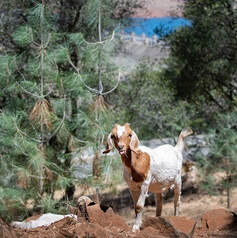 GRAZING GOATS REDUCE FIRE RISK Four hundred goats and sheep just completed the 50-acre grazing operation around Hyatt Powerplant and Canyon Drive towards Oroville Dam’s Upper Overlook. The goal of this project is to minimize the rate of spread of a potential fire by reducing ground fuels, ladder fuels (vegetation that reaches up from the ground into trees), and overgrown vegetation. Grazing is gaining popularity across California as a sustainable method to minimize wildfire risk and lessen the spread of a wildfire through vegetation management. The goats and sheep graze on grasses, leaves, poison oak, and a variety of shrubs and trees. By standing on their hind legs, they can reduce ladder fuels up to six feet high. Plus, they love to eat weeds, especially invasive ones. The goat grazing project is part of DWR’s Fuel Load Management Plan, which helps reduce wildfire risk, increase public safety, and enhance forest health in areas around Lake Oroville within the Federal Energy Regulatory Commission (FERC) project boundary. In partnership with Butte County Fire Safe Council, DWR continues to use grazing as a sustainable method of fuel reduction around DWR’s Oroville-Thermalito Complex. To learn more and to see goat grazing in action, visit DWR’s YouTube Channel for a video of the March 2021 Lakeland Boulevard goat grazing project on DWR’s YouTube webpage. 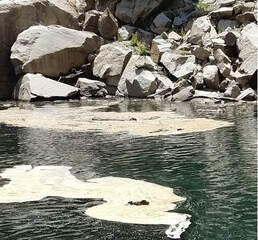 BLUE GREEN ALGAE MONITORING DWR environmental scientists regularly monitor for blue-green algae and their toxins during the summer months. There are currently no harmful algal bloom (HAB) advisories for Lake Oroville, the Thermalito Forebay, or the Thermalito Afterbay. Water samples are taken at various locations regularly from Memorial Day through Labor Day. To learn more about HABs, or to report a HAB visit the Water Board’s website. CURRENT LAKE OPERATIONS The elevation of Oroville’s reservoir is about 739 feet elevation and storage is about 1.58 million acre-feet (MAF), which is 45 percent of its total capacity and 63 percent of historical average. Very warm temperatures are anticipated over the weekend and into next week. Expect to see temperatures over 100 degrees throughout the week. The Feather River releases were increased last week and are currently at 4,000 cubic feet per second (cfs) to meet downstream Delta water quality and outflow needs. Flows through the City of Oroville are at planned at 1,550 cfs with 2,450 cfs released from the Thermalito Afterbay Outlet (Outlet) for a total of 4,000 cfs downstream of the Outlet. Flows through the low flow channel may fluctuate through the week for fisheries purposes. The public can track precipitation, snow, reservoir levels, and more at the California Data Exchange Center at www.cdec.water.ca.gov. The Lake Oroville gage station is identified as “ORO”. All data as of midnight 7/14/2022 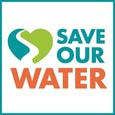 California is entering its third year of drought conditions. With water conservation now a way of life in California, everyone is encouraged to find ways to save water. See tips, tools, and ideas on the Save Our Water website. Information about real time local hydrological conditions, forecasts, and water conditions is available on DWR’s new website California Water Watch. 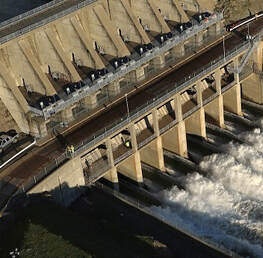 July 8, 2022 Oroville Radial Gates Project On July 12 the Department of Water Resources (DWR) and contractor staff will begin a multi-year project to perform maintenance repairs on the eight radial gate hoist assemblies of Oroville Dam’s Flood Control Outlet (FCO), or main spillway, as part of the Oroville Radial Gates Maintenance Repair Project. This project was established after the 2017 Oroville Spillway emergency to maintain the safe and reliable operation of the FCO, Thermalito Diversion Dam, and Thermalito Power Canal radial gates. In order to perform maintenance repairs on the existing eight radial gate hoist assemblies at the Oroville Dam FCO to address routine wear, the contractor Unico will perform an as-found site inspection of radial gate hoist assembly number eight to obtain dimensional and operational data that will be used to finalize the maintenance repair plan and to reverse-engineer the hoist assembly design for the fabrication of a replica hoist assembly. The spare radial gate hoist assembly (gear motor, wire ropes, gears and pinons, etc.) will be installed while an existing hoist is removed for inspection and maintenance to address any deficiencies due to wear, age, and serviceability of the equipment. Occurring yearly beginning in 2023, maintenance repairs will be performed on one gate hoist assembly per year during the dry season (May 1 and October 31), to ensure that all eight existing radial gate hoist assemblies are available and fully operational throughout flood season. Visitors to Oroville Dam and the Spillway Day Use/Boat Launch Area are advised to be aware of increased activity and construction equipment on Lakeside Access Road and around the top of the FCO gates the week of July 11. 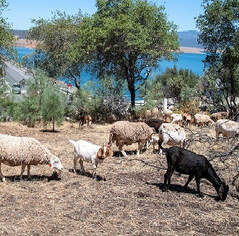 GRAZING GOATS REDUCE FIRE RISK Four hundred goats and sheep just completed the 50-acre grazing operation around Hyatt Powerplant and Canyon Drive towards Oroville Dam’s Upper Overlook. The goal of this project is to minimize the rate of spread of a potential fire by reducing ground fuels, ladder fuels (vegetation that reaches up from the ground into trees), and overgrown vegetation. Grazing is gaining popularity across California as a sustainable method to minimize wildfire risk and lessen the spread of a wildfire through vegetation management. The goats and sheep graze on grasses, leaves, poison oak, and a variety of shrubs and trees. By standing on their hind legs, they can reduce ladder fuels up to six feet high. Plus, they love to eat weeds, especially invasive ones. The goat grazing project is part of DWR’s Fuel Load Management Plan, which helps reduce wildfire risk, increase public safety, and enhance forest health in areas around Lake Oroville within the Federal Energy Regulatory Commission (FERC) project boundary. In partnership with Butte County Fire Safe Council, DWR continues to use grazing as a sustainable method of fuel reduction around DWR’s Oroville-Thermalito Complex. To learn more and to see goat grazing in action, visit DWR’s YouTube Channel for a video of the March 2021 Lakeland Boulevard goat grazing project on DWR’s YouTube webpage. 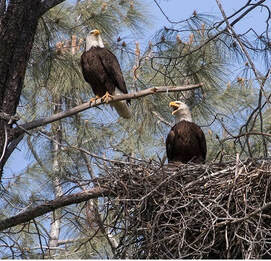 AMERICAN ICON INCREASES IN OROVILLE DWR environmental scientists have discovered a new bald eagle nesting territory at Lake Oroville, bringing the total number of nesting pairs who call this area home to eight. All but one of the eight nesting pairs who live around the lake and the Feather River are raising chicks, called ‘eaglets’. This year DWR’s scientists have been eagerly watching the development of ten eaglets – an increase from the nine spotted in 2021. The chicks have been spotted around Lake Oroville and in the Oroville Wildlife Area near the Feather River. Chicks typically fledge – grow flight feathers and become strong enough to attempt flying – during the months of June and July. Lake Oroville and the Feather River area provide ideal habitat for bald eagles, a species with both state and federal protections. Fish are one of the eagles' main food sources and large water bodies like Lake Oroville provide a wide variety of fish as well as other favorite food sources such as waterfowl, small birds, and mammals. The many trees and snags (tall dead trees) near water areas provide prime nesting and hunting locations for the resident pairs. When DWR’s first bald eagle surveys were conducted in 2002, three nesting territories were identified for protection. Currently, DWR has management plans and implements protections for all eight territories to help protect America’s national bird. 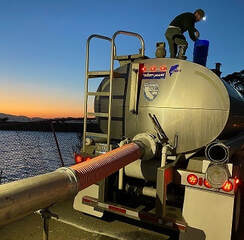 DWR AND CDFW RELEASE SALMON The Feather River Fish Hatchery in Oroville is one of the most productive and successful fish hatcheries on the West Coast of the United States. Millions of fish are raised every year including Chinook fall and spring run salmon and salmon’s cousin, steelhead trout. During February, over 500,000 steelhead smolts were released to the Feather River and between March and June this year, the hatchery released over 11.3 million young Chinook salmon smolts (juvenile fish) into the waters of the Feather River, San Pablo Bay, and San Francisco Bay. The smolts were loaded onto specialized trucks and transported to their various release locations. Transportation to the Bays, especially in drought conditions such as this year, improves survival by avoiding predators and numerous other obstacles and dangers in the Feather River, Sacramento River, and Delta. From these release locations, the smolts will make their way out to the Pacific Ocean where they will feed and grow for two to five years, supporting California’s commercial and sport fishery, before instinctively returning back to the Feather River to spawn and complete their life cycle. Read more about this annual release on the DWR Updates webpage. The Feather River Fish Hatchery is a California State Water Project (SWP) facility built in the late 1960s to mitigate fish migration impacts resulting from the construction of Oroville Dam. DWR maintains the facility and funds the hatchery operations, fish spawning, rearing, and stocking activities provided by California Department of Fish and Wildlife staff. 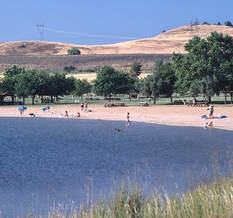 OROVILLE RECREATION The Lake Oroville State Recreation Area (LOSRA) is open for boating, camping, hiking, biking, horseback riding, and much more. The four main paved boat ramps at Lime Saddle, Bidwell Canyon, Spillway, and Loafer Point are open, along with the Lime Saddle and Bidwell Canyon marinas, and campground reservations can be made by visiting the California Department of Parks and Recreation (CA Parks) LOSRA website. Restrooms, potable water, and fish cleaning stations are not in service at the Spillway Boat Ramp area but portable toilets are provided – please plan visits accordingly. A water and sewer pipeline replacement project will break ground this week to restore these utilities. Please be aware of construction traffic in the vicinity of the Spillway Day Use Area. Visitors to the Thermalito North Forebay will find a full CA Parks facility with restrooms, picnic areas, a swim beach, and the Forebay Aquatic Center with kayaks, paddle boards, and other watercraft available for rent Thursday through Sunday. The Monument Hill facility at the Thermalito Afterbay also provides boat ramp access, restrooms, a picnic area, and a swim beach. The 11,000 acres of prime wildlife viewing in the Oroville Wildlife Area also contains the Clay Pit State Vehicular Recreation area for Off-Highway Vehicles (OHVs) (south of Oroville Airport). The OWA is administered for DWR by California Department of Fish and Wildlife (CDFW) and information about the Oroville Wildlife Area is available on the CDFW webpage. The Lake Oroville Visitor Center is open Tuesday through Thursday from 9 a.m. to 5 p.m. An interactive map of recreation facilities in DWR’s Oroville-Thermalito Complex is available on DWR’s Lake Oroville Recreation webpage. Visitors are encouraged to be fire smart, bring plenty of sunscreen, stay hydrated, avoid leaving valuables in visible areas, be prepared for cold water temperatures, and be mindful of personal safety and the safety of those around you. 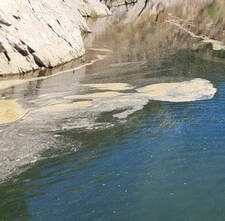 BLUE GREEN ALGAE MONITORING DWR environmental scientists regularly monitor for blue-green algae and their toxins during the summer months. There are currently no harmful algal bloom (HAB) advisories for Lake Oroville, the Thermalito Forebay, or the Thermalito Afterbay. Water samples are taken at various locations regularly from Memorial Day through Labor Day. To learn more about HABs, or to report a HAB visit the Water Board’s website. CURRENT LAKE OPERATIONS The elevation of Oroville’s reservoir is about 747 feet elevation and storage is about 1.65 million acre-feet (MAF), which is 47 percent of its total capacity and 63 percent of historical average. Temperatures over the weekend are projected to be in the mid-90s and increasing to the low-100s next week. The Feather River releases were increased last week and are currently at 4,500 cubic feet per second (cfs) to meet downstream Delta water quality and outflow needs. Flows through the City of Oroville are at planned at 1,050 cfs with 3,450 cfs released from the Thermalito Afterbay Outlet (Outlet) for a total of 4,500 cfs downstream of the Outlet. Flows through the low flow channel may fluctuate through the week for fisheries purposes. The public can track precipitation, snow, reservoir levels, and more at the California Data Exchange Center at www.cdec.water.ca.gov. The Lake Oroville gage station is identified as “ORO”. All data as of midnight 7/7/2022 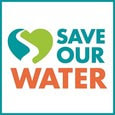 California is entering its third year of drought conditions. With water conservation now a way of life in California, everyone is encouraged to find ways to save water. See tips, tools, and ideas on the Save Our Water website. Information about real time local hydrological conditions, forecasts, and water conditions is available on DWR’s new website California Water Watch. |
Archives
October 2023
Categories
All
|
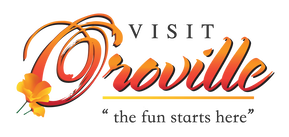
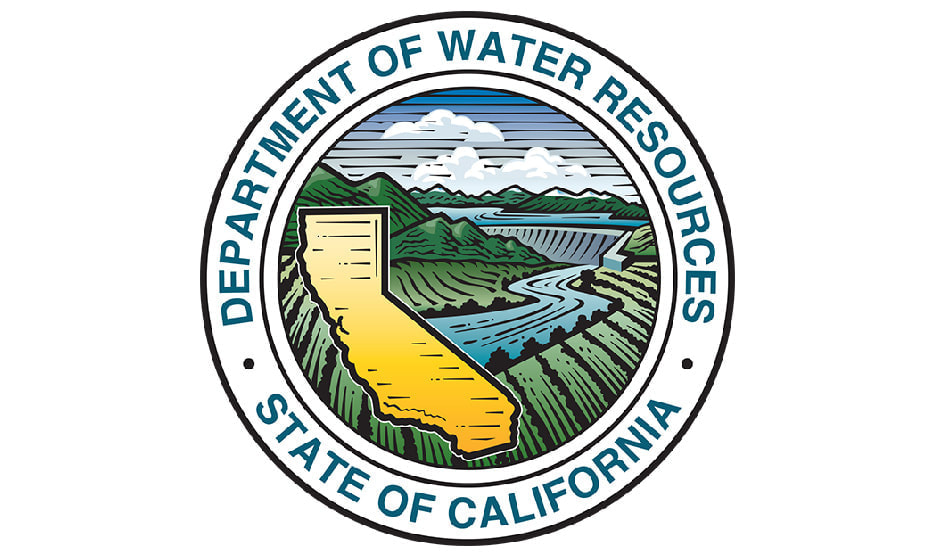
 RSS Feed
RSS Feed